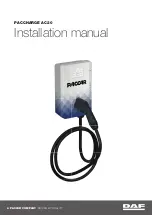
SAFETY
295
NOTE:
The TPMS is not intended to replace normal
tire care and maintenance, or to provide
warning of a tire failure or condition.
The TPMS should not be used as a tire pres
-
sure gauge while adjusting your tire pressure,
unless your vehicle is equipped with a Tire Fill
Alert (TFA) system.
Driving on a significantly underinflated tire
causes the tire to overheat and can lead to
tire failure. Underinflation also reduces fuel
efficiency and tire tread life, and may affect
the vehicle’s handling and stopping ability.
The TPMS is not a substitute for proper tire
maintenance, and it is the driver’s responsi
-
bility to maintain correct tire pressure using
an accurate tire pressure gauge, even if
underinflation has not reached the level to
trigger illumination of the Tire Pressure Moni
-
toring System Light.
Seasonal temperature changes will affect
TPMS information on your instrument cluster
Base System
The Tire Pressure Monitoring System (TPMS)
uses wireless technology with wheel rim
mounted electronic sensors to monitor tire
pressure levels. Sensors, mounted to each
wheel as part of the valve stem, transmit tire
pressure readings to the receiver module.
NOTE:
It is particularly important for you to check the
tire pressure in all of the tires on your vehicle
monthly and to maintain the proper pressure.
The TPMS consists of the following
components:
Receiver Module
Four Tire Pressure Monitoring System
sensors
Tire Pressure Monitoring System Light
Tire Pressure Monitoring System Low Pressure
Warnings
The Tire Pressure Monitoring System
Light will illuminate in the instrument
cluster, a “LOW TIRE PRESSURE”
message will display in the instrument
cluster, an "Inflate to XX" message will be
displayed and a chime will sound when tire
pressure is low in one or more of the four active
road tires. Should this occur, you should stop as
soon as possible, check the inflation pressure
of each tire on your vehicle, and inflate each tire
to the vehicle’s recommended cold placard
pressure value as shown in the "Inflate to XX"
message. Once the system receives the
updated tire pressures, the system will
automatically update and the Tire Pressure
Monitoring System Light will turn off.
NOTE:
When filling warm tires, the tire pressure may
need to be increased up to an additional 4 psi
(28 kPa) above the recommended cold placard
pressure in order to turn the Tire Pressure Moni
-
toring System Light off. The vehicle may need to
be driven for up to 20 minutes above 15 mph
(24 km/h) in order for the TPMS to receive this
information.
6
21_BV_OM_EN_USC_t.book Page 295
















































